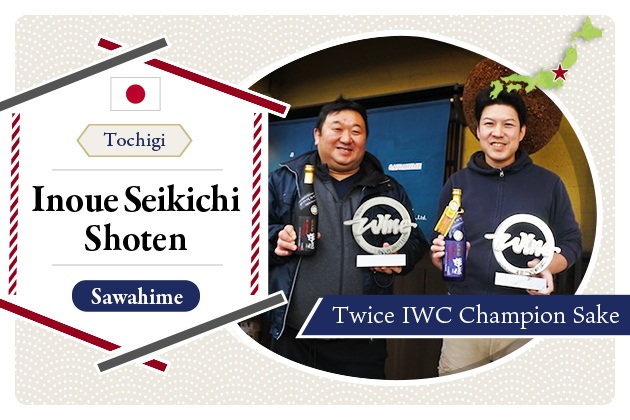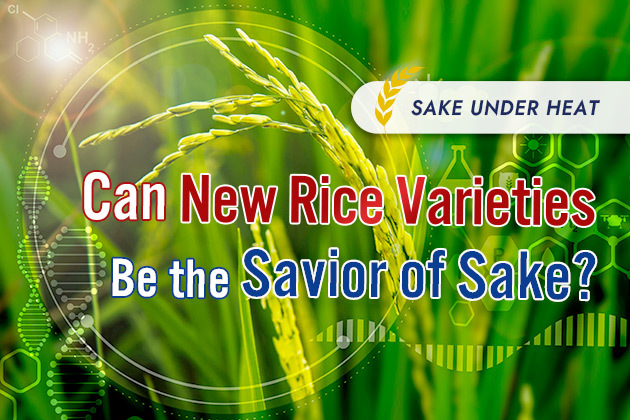
2025.04
02
Kaze no Mori’s Sake Brewing that Connects Satoyama Landscapes for the Next 100 Years
Yucho Shuzo, the renowned brewery behind Kaze no Mori, one of Nara Prefecture’s most celebrated sake brands, has opened a new brewing facility: Katsuragi Sanroku Brewery, commonly referred to as Sanroku-gura.
Known for its innovative approach, Yucho Shuzo has continuously pushed boundaries with projects such as Kaze no Mori, a sake crafted entirely without charcoal-filtration or dilution, and Mizuhana, an exploration of temple brewing traditions unique to Nara. Now, with the establishment of Sanroku-gura, located 7 kilometers from its main brewery in Gose-machi and nestled on the mid-slopes of a terraced rice field, the brewery aims to pioneer a new framework for rice cultivation and sourcing.
With a deep respect for the region’s history and natural environment, Yucho Shuzo is forging close partnerships with local farmers to promote sustainable sake production. We visited the site to learn more about this ambitious initiative.
New Brewery, Built at an Elevation of 400 Meters
Located in Gose City, Nara Prefecture, Sanroku-gura, Yucho Shuzo’s new brewery, sits on the mid-slopes of a terraced rice field at an elevation of approximately 400 meters—just a five-minute drive from Kaze no Mori Tōge, the namesake of the brewery’s flagship brand.
Designed by local architect Tadashi Yoshimura, the brewery is a striking single-story wooden structure built using Yoshino-sugi, Nara’s finest cedar. Surrounded by the expansive satoyama landscape, this elegant facility harmonizes with the natural environment, embodying both tradition and innovation in sake brewing.
The Katsuragi Sanroku region, where the new brewery stands, is the very place where Akitsuho rice—used by Yucho Shuzo for over two decades—is cultivated. The abundant mountain waters flow through the terraced fields, nurturing high-quality rice ideal for sake brewing.
"I believe that brewing sake in the very environment where Akitsuho is grown, surrounded by this satoyama landscape, will fundamentally shift our perspective as brewers."
These are the words of Chobei Yamamoto, the 13th-generation head of Yucho Shuzo. By deepening their understanding of the intricate relationship between rice and sake, as well as the connection between nature and people, the brewery hopes to craft something entirely new—an evolution of sake that is inseparable from the land itself.
At Sanroku-gura, the brewing philosophy is rooted in traditional methods that maximize the potential of rice. At the same time, “We are also proactively incorporating modern technology to streamline operations, allowing us to focus even more deeply on the rice itself,” says Yamamoto.
Given the challenges of sake production in a single-story brewery, particular attention has been paid to reducing the physical burden of transportation within the facility. By integrating machinery where appropriate, the brewery enhances efficiency while maintaining meticulous craftsmanship.
Inside, the brewery offers a spacious environment optimized for sake production. The air is filled with the refreshing aroma of Yoshino-sugi, creating a serene atmosphere. With forests covering 77% of Nara Prefecture, the region has a long history of forestry closely tied to the production of sake barrels. “The evolution of our local forestry has always been intertwined with sake brewing,” Yamamoto reflects, emphasizing the enduring connection between the sake industry and the use of fine wood materials.
Beyond Yoshino-sugi, the brewery incorporates materials that embody the region’s cultural heritage. Stacked neatly along the walls are black wooden planks, soon to be used as flooring. These are repurposed shiki-gawara—floor tiles once used in historic buildings across Nara Prefecture. Having fulfilled their original purpose, they were carefully preserved and have now found a new life within the brewery, further deepening its connection to the local landscape and traditions.
The brewery features a terrace overlooking the terraced rice fields below, offering a panoramic view of the Nara Basin. From this vantage point, visitors can immerse themselves in the pristine satoyama air and the refreshing breeze, a serene experience that evokes a deep sense of connection to the land.
"It would be wonderful if people could enjoy Sanroku-gura’s sake right here on this terrace," says Yamamoto. The design of the brewery reflects a clear vision—one that seeks to preserve and pass on the region’s culture and natural beauty to future generations.
"It would be wonderful if people could enjoy Sanroku-gura’s sake right here on this terrace," says Yamamoto. The design of the brewery reflects a clear vision—one that seeks to preserve and pass on the region’s culture and natural beauty to future generations.
Passing on the value of satoyama to future generations
Gose City, located at the southwestern edge of the Nara Basin, is a region steeped in history. Home to archaeological sites from the Kofun period and well-preserved jinya-machi streets dating back to the early Edo period (1603-1868), it is also a place of striking natural beauty, where the towering Katsuragi and Kongō mountain ranges frame expansive terraced rice fields.
However, rice cultivation in this area faces pressing challenges, including an aging farming population and a shortage of successors. At the root of these issues is the low profitability of rice farming. The structural limitations of terraced fields restrict crop yields, making it even more difficult for farmers to sustain their livelihoods. In response, Yucho Shuzo established Sanroku-gura with the goal of overcoming these regional challenges and preserving the value of satoyama for future generations.
Beyond its role in environmental purification, disaster prevention, and biodiversity conservation, satoyama has increasingly gained attention for its sustainability benefits. However, Yamamoto emphasizes an even deeper perspective—valuing satoyama not only for its ecological functions but as a place of tranquility, comfort, and meaningful human connection.
With its diverse natural environment and a legacy shaped by generations of human activity, satoyama has long served as a place where people cultivate sensitivity, creativity, and cultural heritage. Preserving its value for the next 100 years and passing it on to future generations is a mission Yucho Shuzo has embraced.
To achieve this, the brewery has begun developing a system that reinvests profits from sake production back into local farmers and the satoyama landscape, ensuring its continued vitality through sustainable economic support.
New model for supporting satoyama through sake brewing
At the heart of this new initiative is the Kaze no Mori Satoyama Community, a framework designed to connect farmers, brewers, retailers, and consumers in a shared commitment to preserving satoyama. Centered around Sanroku-gura, this community fosters direct engagement between stakeholders, creating a sustainable ecosystem for rice cultivation and sake production.
Retailers, too, will take on the role of rice owners, actively participating in the process and conveying the story behind the rice to consumers. By deepening this connection, the initiative aims to expand the network of people who support and sustain satoyama for future generations.
Through this initiative, a portion of the revenue from value-added sake is returned to local farmers, creating a direct economic link between consumers and satoyama through sake.
"By becoming rice owners, retailers can develop a more personal and hands-on connection with satoyama and its ingredients. This allows them to communicate the appeal of the sake in their own voice, rather than simply echoing the brewery’s words," says Yamamoto.
Retailers are invited to participate by purchasing Akitsuho rice in units of one or six hyo (traditional rice bales). Beyond financial support, they are also encouraged to engage more deeply—whether by joining the brewing process at Sanroku-gura or utilizing the facility for community events—strengthening their connection to satoyama.
The initiative has already garnered significant attention. Both last year’s preliminary enrollment and this year’s first official recruitment exceeded expectations, with applications surpassing available spots.
Yucho Shuzo has long been committed to fostering deeper ties between farmers and sake production. Since 2017, the brewery has partnered with Sugiura Farm—known for cultivating pesticide-free Akitsuho—on the Noka Sakaya (Farmer’s Sake Brewery) project. In this model, rice grown by Sugiura Farm is brewed into sake by Yucho Shuzo, and then sold directly by the farm, ensuring that profits are reinvested into rice cultivation.
Over time, this initiative has grown beyond its economic impact. Today, more than 100 volunteers visit Sugiura Farm annually, forming a vibrant network of people engaged with satoyama. "I believe Sanroku-gura has the potential to create an even greater movement," Yamamoto says with optimism.
Sake brewing at Sanroku-gura and its future vision
As of March 2024, when this article was written, the construction of Sanroku-gura had been completed, and all brewing equipment had been installed. With licensing applications underway, full-scale brewing operations were set to begin.
The brewery will use rice grown in the Katsuragi Sanroku region, including organically cultivated varieties, to produce sake under the Kaze no Mori brand. Notably, all sake brewed at Sanroku-gura will have a rice polishing ratio of 90% or higher, emphasizing minimal intervention to highlight the natural qualities of the rice.
Production is expected to reach a maximum of approximately 150 koku (about 27,000 liters), which is roughly one-tenth of the capacity of the main brewery.
Looking ahead, Yucho Shuzo is considering producing distinct batches of sake based on specific terraced rice fields and individual farmers. If realized, this approach will further enhance the concept of "sake with a visible terroir," offering a deeper connection between the rice fields and the final product.
"Above all, I want to brew sake for the local community," says Yamamoto. "That commitment has never changed. Without the support of the people here, our future would not be possible."
With brewing at Sanroku-gura having commenced this season, anticipation is building for the emergence of a new sake culture—one that illuminates the future of both the region and the craft itself.
Pickup Articles
2019.01.18
2019.01.25
Trending Articles
Popular Articles
Recent Articles













